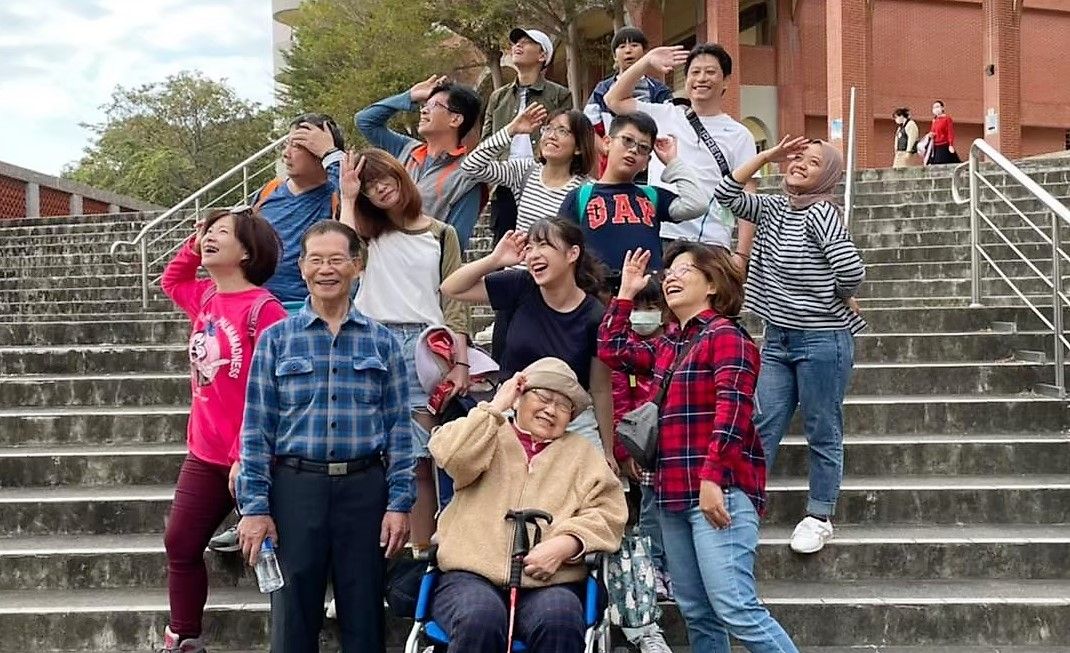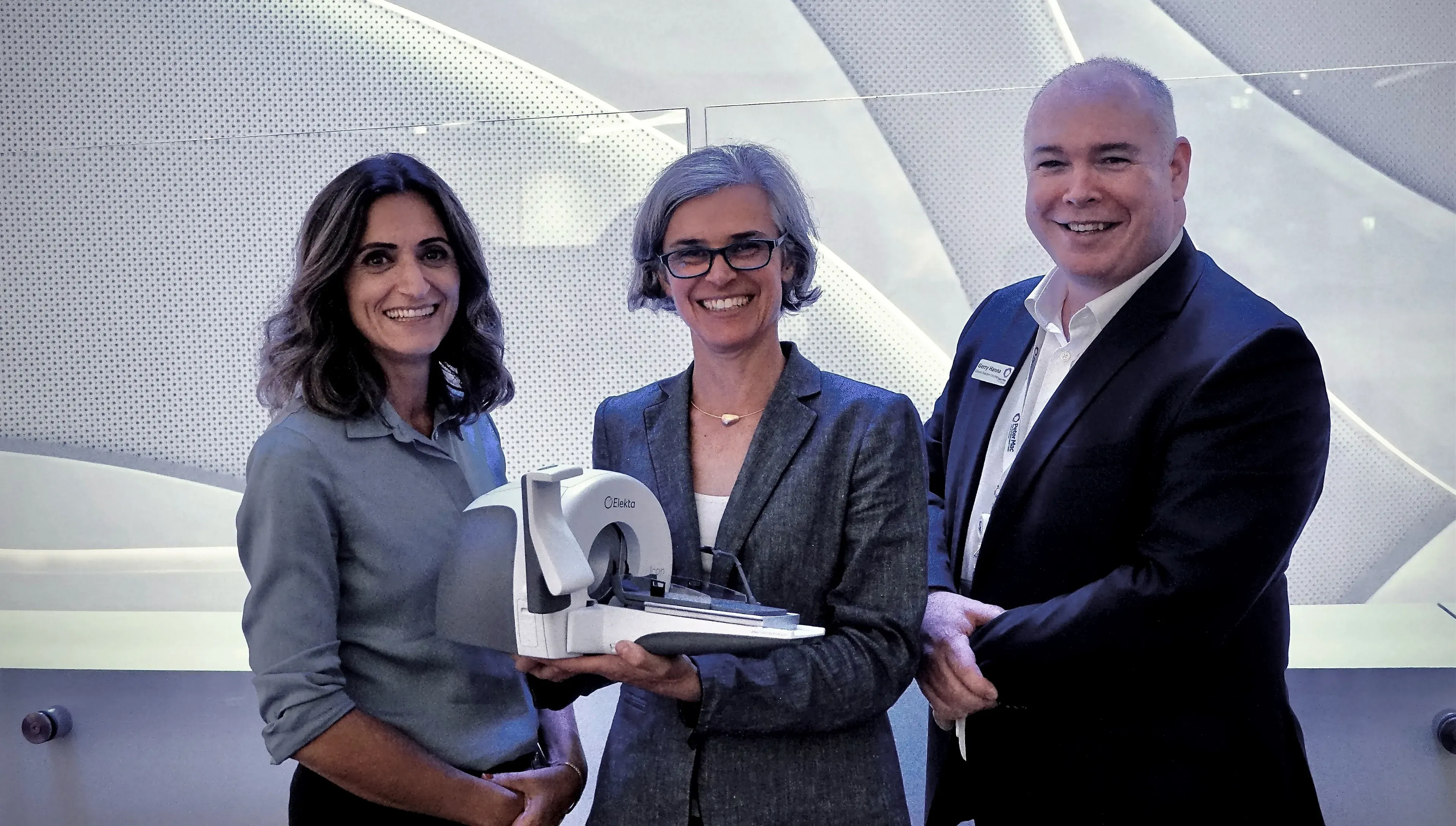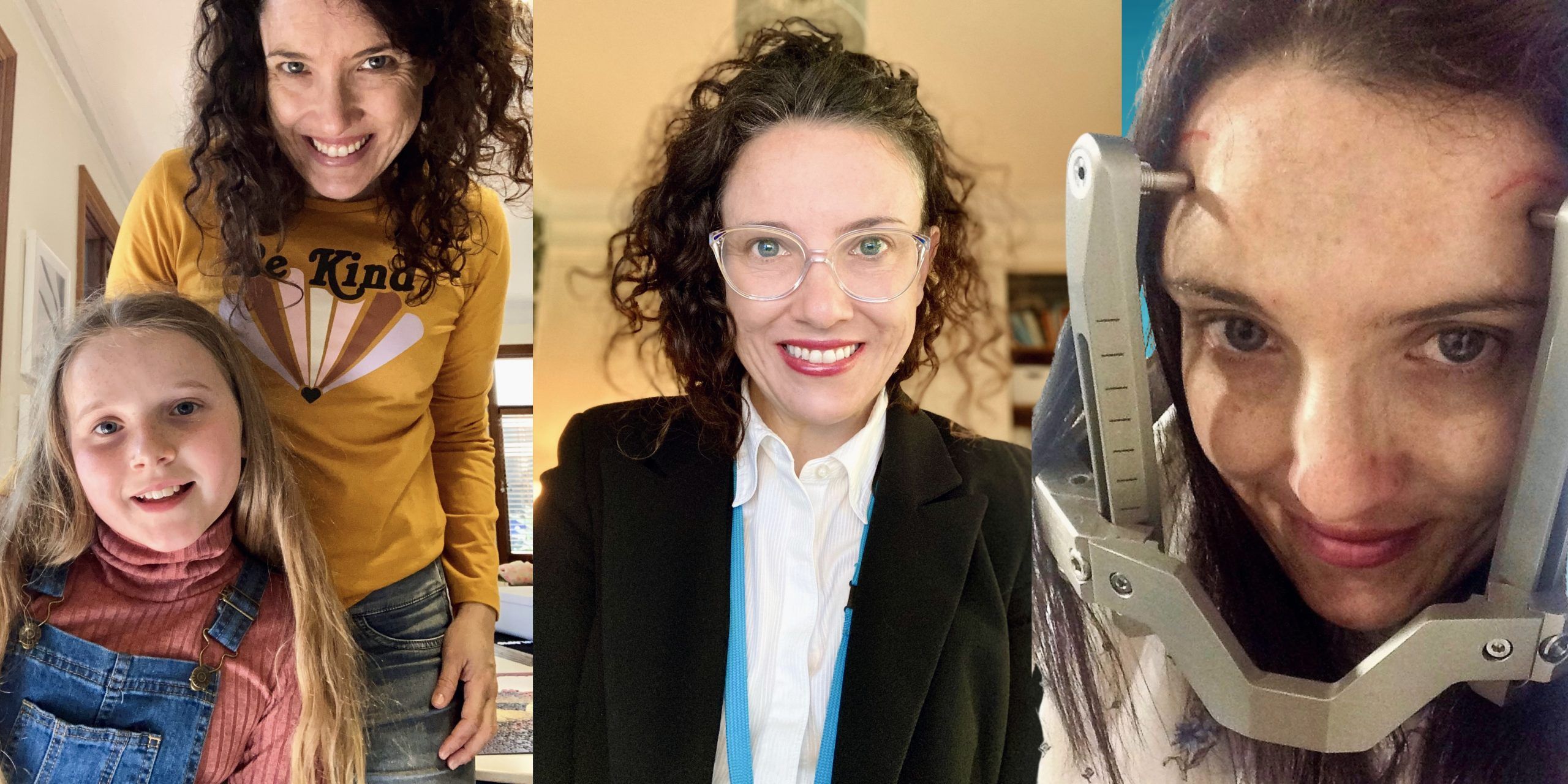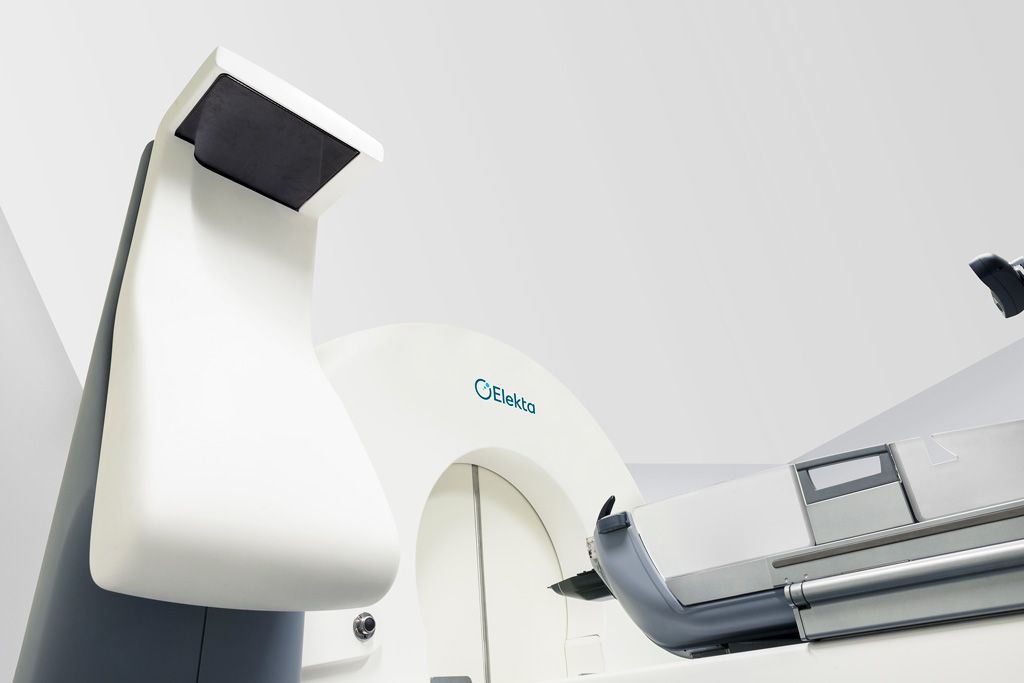London Hospital marks three years of faster Gamma Knife planning and remote plan collaboration
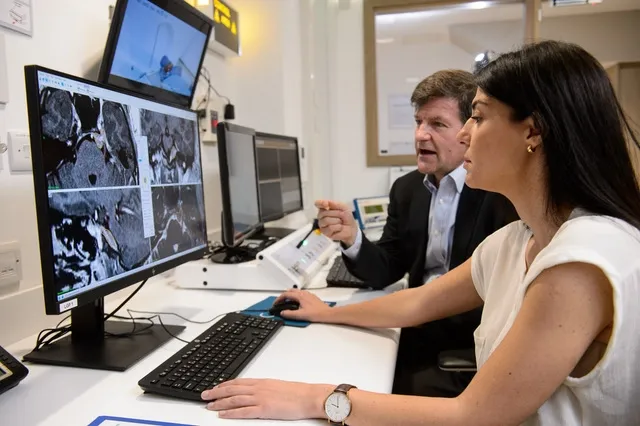
Lightning treatment plan optimizer slashes planning time, while Remote enables treatment team to consult on plans over a secure Internet connection
In 2020, GenesisCare at Cromwell Hospital in London upgraded to the Leksell Gamma Knife® Icon™ radiosurgery system, at the same time acquiring Leksell Gamma Knife® Lightning and Leksell GammaPlan Remote, the Elekta technology that enables clinicians to jointly review plans over the web. Lightning and Remote have significantly accelerated and streamlined GenesisCare’s Gamma Knife radiosurgery service.
Lightning, introduced in 2020, increases automation and speed in the radiosurgery workflow, allowing users to quickly and automatically create plans for multiple targets in less than 60 seconds – sometimes in 30 seconds or less. The short optimization times also afford the option for clinicians to generate and compare multiple plans and choose the optimal plan – personalized to each patient’s needs.
The Gamma Knife radiosurgery service at GenesisCare treats the typical range of Gamma Knife indications, including brain metastases, meningiomas and acoustic neuromas, as well as trigeminal neuralgia and AVMs.
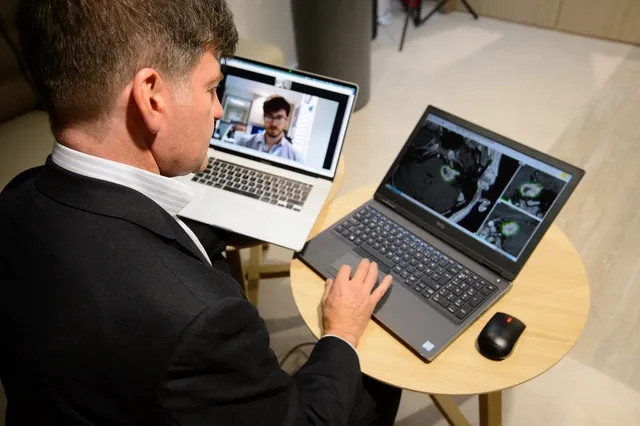
“Our four consulting physicists use Lightning most often when a patient has a larger-volume lesion that would take significant time to plan manually,” says Senior Gamma Knife Radiographer Josiah Rickman. “Conversely, they might plan manually when the patient has multiple tiny mets, as many as 20 or more, and they want to quickly put some single shots on the targets.”
One of the consultants, Ian Paddick – who contributed to the Paddick Conformity Index and Gradient Index that GammaPlan uses and who consulted in Lightning’s development – adds that some Lightning plans require only minor manual adjustments at the end.
“It would entail, for example, simply changing the weight of the isocenters or renormalizing the plan,” Paddick says.
Overall, GenesisCare’s consultant physicists use Lightning first in 80 percent of cases and then try reoptimizing the Lightning plan once or twice, Lead Gamma Knife Radiographer Renay Joss notes.
Adding “tuning structures” helps Lightning avoid eloquent tissues and OARs
Placing the dose on targets that are near critical structures or lesions that are close together can be challenging and time-consuming if done manually. However, Lightning solves this problem by using tuning structures, according to Rickman.
“In creating a tuning structure, the planner outlines a volume that is not a treatment volume, but rather an area between two treatment volumes or an area where a steeper gradient is required,” he explains.
Recently, Joss witnessed a GenesisCare physicist exploit this Lightning feature while they were planning a treatment in which the dose was very close to the patient’s optic chiasm.
“Lightning significantly reduced the dose to the optic chiasm in a plan that took seconds to create.”
“The physicist used a tuning structure to cover the dose that was around the tumor volume and instructed Lightning to reduce the dose outside,” she recalls. “Lightning significantly reduced the dose to the optic chiasm in a plan that took seconds to create.”
Feeling the need for speed
Rapid treatment planning speed – seconds with Lightning versus up to an hour with manual planning – is the hallmark of the treatment plan optimizer, Paddick adds, referencing a recent case involving a complex AVM.
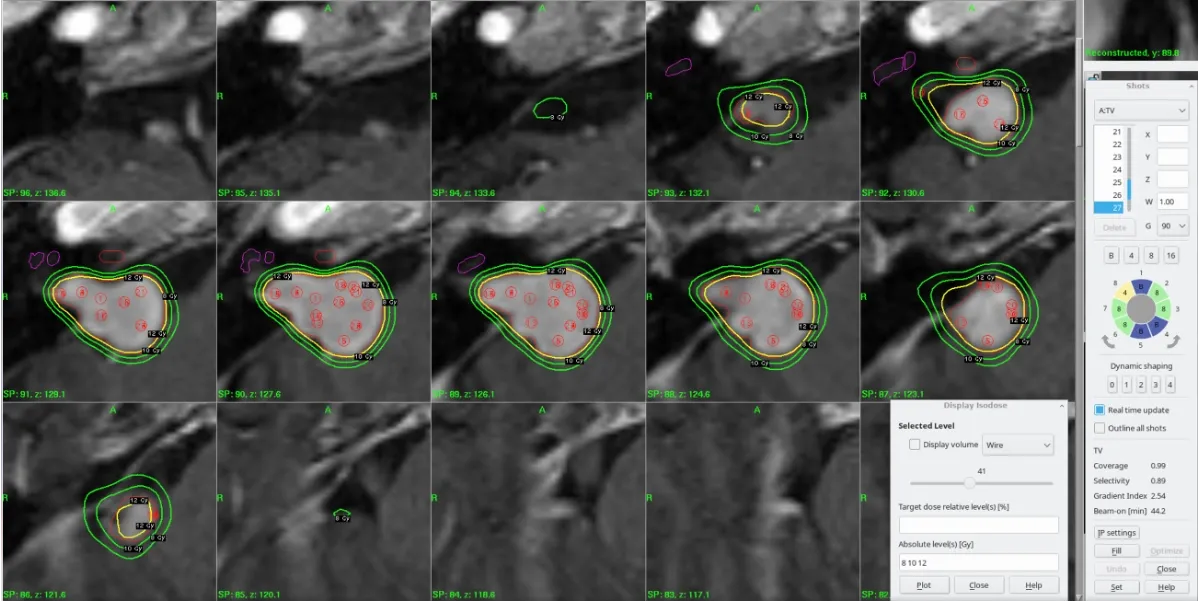
“This was a very complicated three-dimensional structure,” he remembers. “It took the clinical team 90 minutes just to contour the target, so by the time we had produced the target contour we were all exhausted. It was just wonderful to be able to click a button and get Lightning to create a very good plan for us in about 30 seconds. I would have had to spend an hour creating a manual treatment plan. It was a tremendous relief to rely on Lightning.”
According to Rickman, the “vast majority” of cases take Lightning just 20 to 60 seconds to yield a plan that satisfies target coverage, OAR dose constraints and beam-on time. Adjusting for a shorter beam-on time is simple – the planner uses a “slider” in the Lightning user interface and reoptimizes. Lightning then quickly computes the impact on target coverage, dose and other parameters and the physicist can determine if the new plan is acceptable.
Remote technology eliminates treatment delays via virtual planning and plan review
Pre-2020, the requirement for GenesisCare’s consultant neuroradiologist to be physically present at the hospital’s GammaPlan workstation sometimes caused treatment delays, Joss remembers.
“Remote has opened up opportunities for neuroradiologists and treating consultants to be remote and still help with contouring volumes. Delays we had in booking patients were significantly reduced.”
“The physicists and other consultants, such as neuroradiologists, aren’t based at GenesisCare, so not having consultants available here on certain days – or to have to travel here to enable timely patient treatment – was an issue,” she says. “Remote has opened up opportunities for the neuroradiologists and treating consultants to join remotely and help with contouring volumes. The delays we had in booking patients were significantly reduced.”
Rickman adds that many of the GenesisCare consultants are based at Charing Cross Hospital, which – though just a mile away – still caused problems in the pre-Remote era.
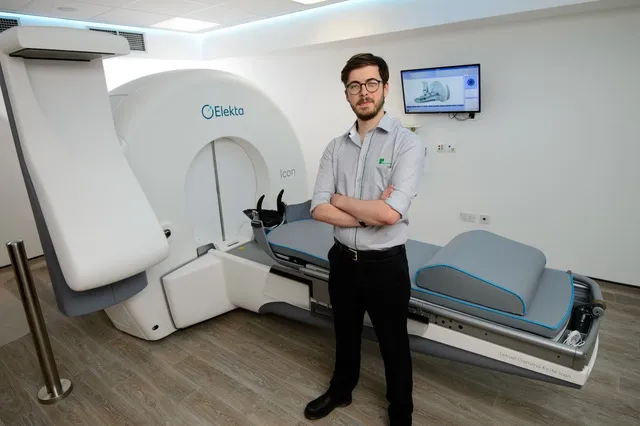
“It could take them over half an hour to get here,” he says. “Remote eliminated that challenge, and because of this technology, consulting oncologists based in even more distant locations, such as Oxford or Nottingham, have been more likely to refer patients for radiosurgery.”
Joss adds that Remote has also been useful in multidisciplinary (MDT) settings, not just on treatment days.
“The MDT we attend is offsite and done with Teams,” she explains. “With Remote we can access GammaPlan and share the screen during the live MDT. In that way, everyone can see what was treated on the Gamma Knife and compare treatment images with any new follow-up images. Before Remote, all we could do was send still screenshots of what has been treated.”
Remote can improve all patient treatment plans, according to Paddick.
“The great thing about Remote is you can view the patient, but you don’t download any patient-identifiable information, you can just see and review,” he says. “This has been particularly beneficial for our neuroradiologists. If we can’t get a neuroradiologist to attend the contouring session in person, he or she will join us virtually via Remote. For them to come down to the Gamma Knife unit was costly in terms of their time, but now they just remote in. And they can not only see the contour but can take control of the planning system and adjust it.”
GenesisCare’s acquisition of Leksell Gamma Knife Icon, the Lightning treatment plan optimizer and Remote has had a profound impact on the center’s radiosurgery service, Joss concludes.
“Gamma Knife radiosurgery with Icon is more accurate, efficient and safer,” she says. “And with Lightning, treatment planning is so much faster, which has allowed us to treat more patients each week. Finally, with Remote, the wider radiosurgery team can contribute much more easily to the patient’s treatment.”
Learn more about Gamma Knife Lightning.
LARLGK230620
